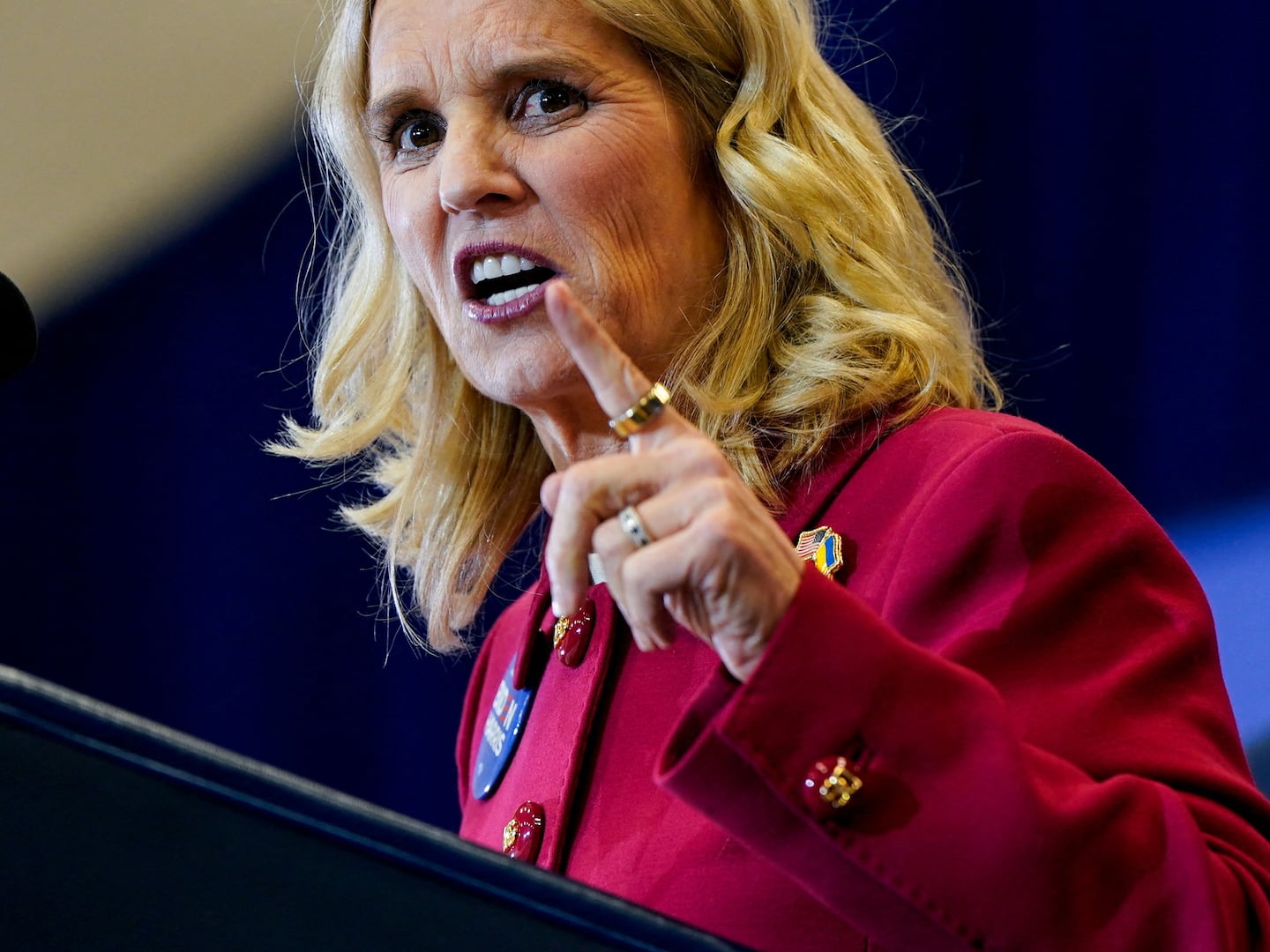Elon Musk and many of his employees at his Tesla factory agree on one point: Work is hell.
For Musk, the billionaire CEO of the electric car company, that hell is a technical inconvenience. Tesla, which currently sells a small number of high-end cars, recently announced its plans to massively increase production and enter the mass market with its Model 3 car. “Frankly, we’re going to be in production hell,” Musk told Tesla employees during a July 28 announcement. “For at least six months, maybe longer.”
For a number of Tesla factory workers who are currently trying to unionize, hell feels like herniated neck disks, carpal tunnel, and tendinitis.
“Having to look up every day, 12 hours a day, six days a week, hands over my shoulder, it was two herniated disks in my neck,” Michael Sanchez told The Daily Beast. He has since moved to less-intensive work on door panels. “After three-plus years working at Tesla, it just starts adding on until you’re living the pain every day. Whether you’re off work or not.”
Tesla casts itself as the eco-friendly car of the future, but the tech company still depends on the physical labor of workers who assemble vehicles in its factory in Fremont, California. As the company enters a production blitz, some of these workers are demanding a union, citing a high rate of past injuries.
So when factory workers started murmuring about a union last summer, Sanchez got on board. But a year out, while Tesla shifts into high gear, its union drive is still stalling.
“The main thing that’s holding it back is the fear. The fear of people not aware what their rights are,” Sanchez said. “But what Tesla feeds them during meetings is the thought that ‘maybe I’ll lose my job, or maybe I’ll lose my opportunity for a lead.’”
Tesla management has a ready-made warning of the worst-case scenario for unionized car factories. Its Fremont factory used to be the site of NUMMI, a joint venture between Toyota and General Motors, which shuttered in 2010, after General Motors declared bankruptcy and pulled out of the partnership. The plant had been Toyota’s only unionized factory in the U.S. Tesla snapped up the 5.5 million-square-foot building for just $42 million—a Great Recession bargain on a plant previously valued at $1.3 billion.
“They retaliate just by telling people that the union is worthless,” Sanchez said, “that they’re the ones that ruined NUMMI. And it’s not true.” In a phone call with The Daily Beast, a Tesla representative also suggested that NUMMI’s union might have contributed to its closure.
Tesla’s anti-union push has played out in arguments between workers and managers on the factory floor, pro-union employee Alan Ochoa said.
“Every time we go out there and try to hand out flyers, security comes and talks to us for 20 to 30 minutes, takes our badges, makes sure we’re employees of the factory,” Ochoa told The Daily Beast. “Sometimes people from HR come, and they don’t hold back on their opinions on the matter.”
Asked about the workers’ allegations, a Tesla spokesperson provided The Daily Beast with a statement from February.
“As California’s largest manufacturing employer and a company that has created thousands of quality jobs here in the Bay Area, this is not the first time we have been the target of a professional union organizing effort such as this,” the spokesperson said. “The safety and job satisfaction of our employees here at Tesla has always been extremely important to us. We have a long history of engaging directly with our employees on the issues that matter to them, and we will continue to do so because it’s the right thing to do.”
It’s illegal for employers to directly threaten to close a factory if workers unionize, but employers can imply that unionization forced other plants into closure, according to labor lawyer David Rosenfeld of UC-Berkeley. He pointed to a Mississippi Nissan plant where workers voted last week not to unionize. In a video to workers, Nissan appeared to imply that unionizing would kill jobs; on a local radio broadcast, an unnamed interviewee warned that the plant’s predominantly black workforce would go back to “picking cotton” if they unionized.
“You can’t say ‘we’ll take action if you unionize,’ but you can say ‘look what happened in other facilities,’” Rosenfeld told The Daily Beast. “You can’t say ‘if you support the union, you won’t be promoted,’ but you can say ‘supervisors don’t support the union.’ It’s a lot of innuendo.”
But some tactics went too far, the United Automobile Workers union alleged. In April, the UAW filed four separate complaints against Tesla on these workers’ behalf, accusing Tesla of “intimidating [and] creating the appearance of surveillance and conducting surveillance on [employees] and others for their union activities and/or union sentiments,” allegedly in violation of the National Labor Relations Act. Tesla “instruct[ed] employees that they were not allowed to pass out any literature unless it was pre-approved by the Employer,” the filing continues.
Tesla denounced the filings as “entirely without merit.”
If the employees were distributing literature on the factory floor, Tesla would have been within its rights to interfere, Rosenfeld said, but “workers have the right to do it in non-work area, lunchrooms, break rooms, sometimes hallways, parking lots, smoking areas.”
But some of Tesla’s anti-union push has been personal. After a quiet beginning, the union campaign burst into the public when Tesla worker Jose Moran penned a February blog post calling for a union and lambasting Tesla for its record on worker injuries.
“Preventable injuries happen often. In addition to long working hours, machinery is often not ergonomically compatible with our bodies,” Moran wrote. “There is too much twisting and turning and extra physical movement to do jobs that could be simplified if workers’ input were welcomed… A few months ago, six out of eight people in my work team were out on medical leave at the same time due to various work-related injuries.”
Musk accused Moran of being a “guy [who] was paid by the UAW to join Tesla and agitate for a union. He doesn’t really work for us, he works for the UAW.” The UAW denied Musk’s claims and demanded he apologize to Moran. He has not.
Meanwhile, in an email to employees, Musk slammed the union drive, claiming that the UAW’s “true allegiance is to the giant car companies… This is David vs Goliath if David were six inches tall!” Musk wrote of his company.
In response to employee grievances, Musk promised “fun” factory perks “like free frozen yogurt stands scattered around the factory and my personal favorite: a Tesla electric pod car roller coaster (with an optional loop the loop route, of course!)” he wrote to employees in February. “We are going to hold a really amazing party once Model 3 reaches volume production later this year.”
Pro-union employees said their demands were safety, not soft-serve. Shortly before Moran’s blog post, Ochoa had received a grim diagnosis: the carpal tunnel he’d received on the job was labeled “permanent,” forcing him into medical leave.
The injury, which left him unable to even change gears in his car was “like what I imagine arthritis feels like: all your joints in pain,” he said.
Tesla’s past rate of injury has been a rallying point for pro-union workers.
“In 2015, the last full year for which data is available, we had an injury rate that was far higher than the industry average,” pro-union employees wrote in an open letter on July 31, days after Musk made his Model 3 announcement. “For that year, data from the Bureau of Labor Statistics indicates that our injury rate was higher than that of sawmills and slaughter houses.”
For that year, Tesla had an injury rate 31 percent higher than industry average, and a serious injury rate 103 percent higher, according to a study pro-union workers commissioned from Tesla’s OSHA reports.
Tesla management said things have changed.
“We may have had some challenges in the past as we were learning how to become a car company, but what matters is the future and with the changes we’ve made, we now have the lowest injury rate in the industry by far,” a Tesla spokesperson told The Daily Beast. “Our goal is to have as close to zero injuries as humanly possible and to become the safest factory in the auto industry.”
Tesla said it had since made safety improvements that reduced injuries 30 by percent in 2016. “In addition, through the end of Q1 2017, the factory’s total recordable incident rate... is 32% better than the industry average,” the company wrote in a statement.
The pro-union report argued that Tesla’s most recent data was “too preliminary to be considered accurate given Tesla’s erratic reporting patterns.”
Indeed, these injuries occurred when Tesla had relatively a low output. Tesla has been a luxury car company until the roll-out of the $35,000 Model 3. Last year, the company delivered less than 80,000 vehicles to buyers. Next year, Tesla plans to build 500,000 cars.
In addition to new equipment, Tesla will build parts of the new cars at a separate facility, distributing the workload across more employees. But workers like Sanchez remain skeptical.
When he started working with Tesla in 2012, employees worked 14 hours a day to produce 90 cars he claimed. New hires cut the work day down to eight hours, but “There’s no realistic way than going up through 12 hours,” he said. “That’s just to try to hit those numbers.”
If Sanchez feels squeezed, so does his boss. Confronted with Tesla’s injury rate earlier this year, Musk said the company was working to improve on a razor-thin budget.
“We’re a money-losing company,” Musk, who is worth $15 billion, told The Guardian in May. “This is not some situation where, for example, we are just greedy capitalists who decided to skimp on safety in order to have more profits and dividends and that kind of thing. It’s just a question of how much money we lose. And how do we survive? How do we not die and have everyone lose their jobs?”
But said Sanchez believes the factory is headed toward unionization.
“The thing is, they dream about the future, but they dream a little too soon,” he said of management. “In the process, they have all their workers bust their ass, and in return we get almost nothing.”






